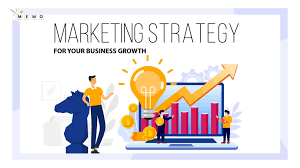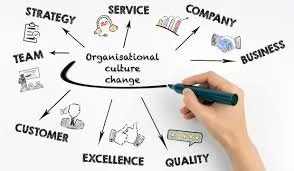6 Reasons Why It is Challenging to Instill a Growth Marketing Strategy at Established Businesses
The Challenge of Installing Growth Marketing Strategies in Established Businesses
Here’s a question that nearly every established business owner wants the answer to, especially. Why is growth so difficult?
The funny thing is that even when you have sufficient demand for your products and services, it can seem impossible to get past a certain level. In some cases, even, runaway demand for what a small company provides can perversely cause the wheels to fall off.
Now, here’s the thing. There isn’t any simple answer to the headline question. But one of the underlying issues is almost certain to be that the growing SME (small to medium enterprise) does things differently from an established bigger business. In a word, you’re not equipped to scale.
To understand this issue clearly, it’s necessary to have some understanding of how big companies work. For a lot of entrepreneurs, the reason you set out on your own is precisely because of the perceived ‘red tape’ and excessive overheads involved in getting done what seems to be simple things.
But, like everything in life, there is a reason for that ‘red tape’. Let’s take the function of Accounts Payable (AP) in a big organization and analyze it a little; this is a good one, because most SMEs, yours probably included, will have at least one or two big companies as suppliers or clients, depending on the nature of your business.
These businesses that are interconnected to your own, valuable as they may be, probably annoy you in the length of time taken to settle your invoices. You probably find it frustrating, as the little guy, that the Big Corporate Machine with all that cash, lets you starve while you wait for what is surely a pittance for them in the greater scheme of things.
But delve a bit deeper. That company might be publicly owned. It might have several hundred people who have the power to order goods and services required to keep business ticking over. It, therefore, needs processes to be sure that all purchases are legit and fall within accepted governance standards.
That is why AP processes exist. These, for example, often kick off with you first sending a quote, getting a Purchase Order (which can itself seem a hassle), then invoicing, then settling down for a 30 or 60-day wait.
This process is, you will appreciate, is very different from the one your SME has for paying the suppliers, all of whom you probably know personally.
In fact, you probably use an Excel spreadsheet to keep track of payments; you might use multiple other spreadsheets or Word documents as essential tools to keep the business running.
When an invoice comes in, to provide a comparison with the ‘big business AP’ story, you either pay right away or make a calendar note to do so when it falls due. A very different way of doing things; more ‘organic’. More ‘feel good’. But not scalable.
When your processes are tied to low-level tools like spreadsheets or Word documents, you have a real problem. You cannot scale. You just don’t have enough hair to pull out or turn grey.
That’s why, should you do a great job of marketing and delivery and demand shoots up, your business could find itself in real trouble. The very growth you have managed to generate could ironically strangle the company: delivery starts to slip, the patience of loyal customers is tested, quality might take a knock, and your management team spends too much time at the office putting out what looks like out-of-control forest fires.
There are a number of reasons why businesses struggle to grow beyond what seems like an inevitable plateau. The inability to scale is not the only reason that SMEs struggle to grow. Far from it. However, sticking with the idea of why failing to implement systems is a major cause of the inability to scale, when we’re encouraging an SME to make the transition from an accounting package to an Enterprise Resource Planning solution, we almost always encounter a mess of spreadsheets and other workarounds.
The owners of these companies realize that they don’t have the systems and processes to scale; they’ve reached the limits of their growth and need something that can keep track of an expanded enterprise, let alone create a growth marketing funnel. That being said it is hard for business operators to change the habits that they have gotten used to.
It’s easier than ever before for you to start a new business. At the same time, it’s harder than ever before to grow your business!
Don’t believe it?
Of 31+ million medium to small businesses in the US, 93% of them say that they struggle with consistent growth.
Yep - Starting a business is as simple as filing a few pieces of paper (setting aside getting the funding and doing the right product ideation and strategic planning) while growing that business is a pain point, to say the least.
CEOs aren’t struggling to grow because they’re not taking enough initiative. In fact, most CEOs are working harder than ever!
But as was alluded to earlier, given the reasons behind why many entrepreneurs actually start businesses, reaching this point of limited progress and seemingly increasing red tape creeping into their businesses, it has to be especially frustrating. That being said it is again, rather ironically a more common occurrence than one would hope for.
Why does this stagnation tend to occur with an overwhelming preponderance of businesses? Obviously, some factors are specific to individual businesses themselves, or the markets they are in, or the systems that they have to build, however, there are a number of common ones we have identified that tend to be common in established businesses that have not managed to scale their growth.
Struggles with growth are a common issue that entrepreneurs often face. While there are many potential factors that can contribute to a startup's struggles, there are a few common causes that can hinder a company's growth. If you're an entrepreneur and your startup is struggling with growth, understanding these causes can help you pinpoint where you need to make changes and improvements in your business model.
6 Reasons Why Instilling a Growth Marketing Playbook is Challenging to Implement at Established Businesses
Challenges in Instituting a Growth Marketing Playbook at Established Businesses
.


